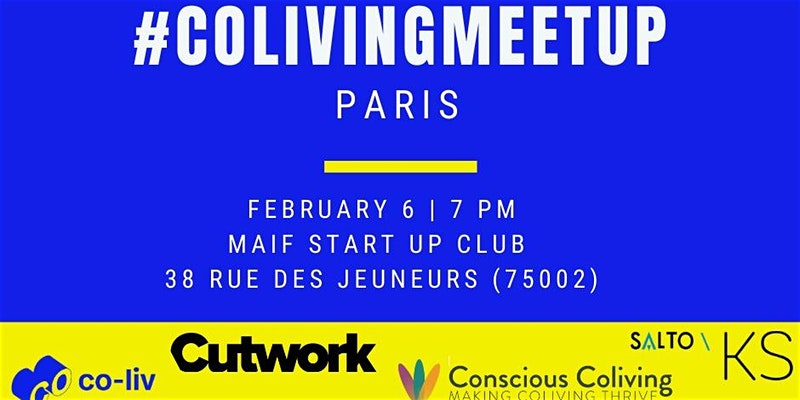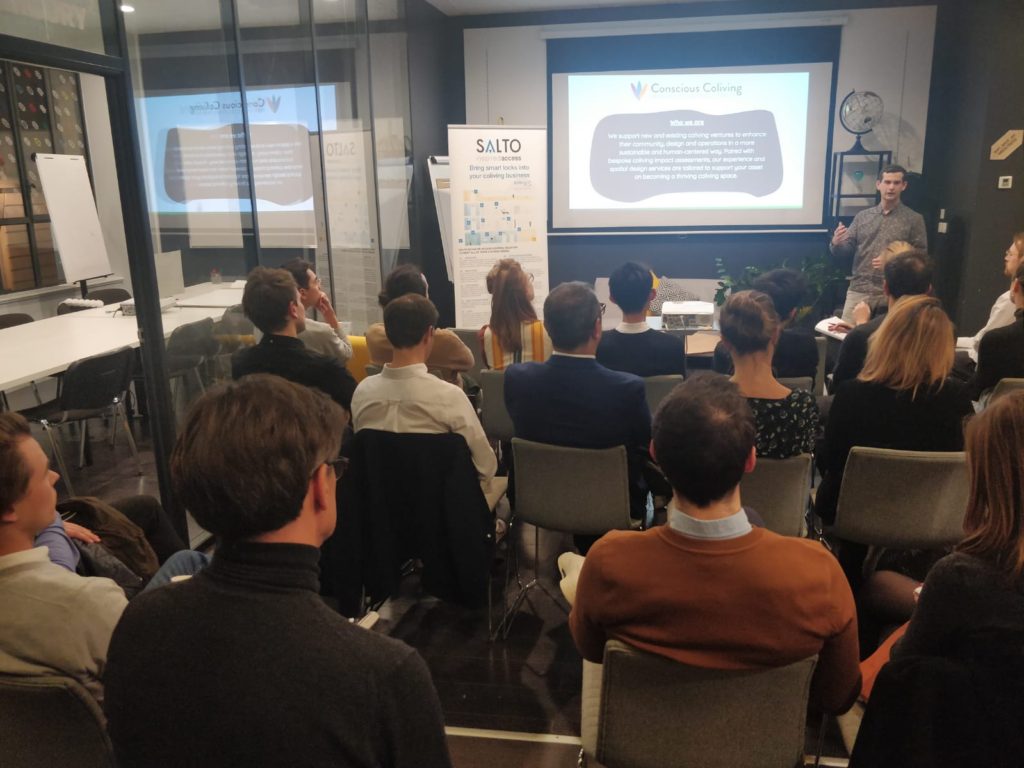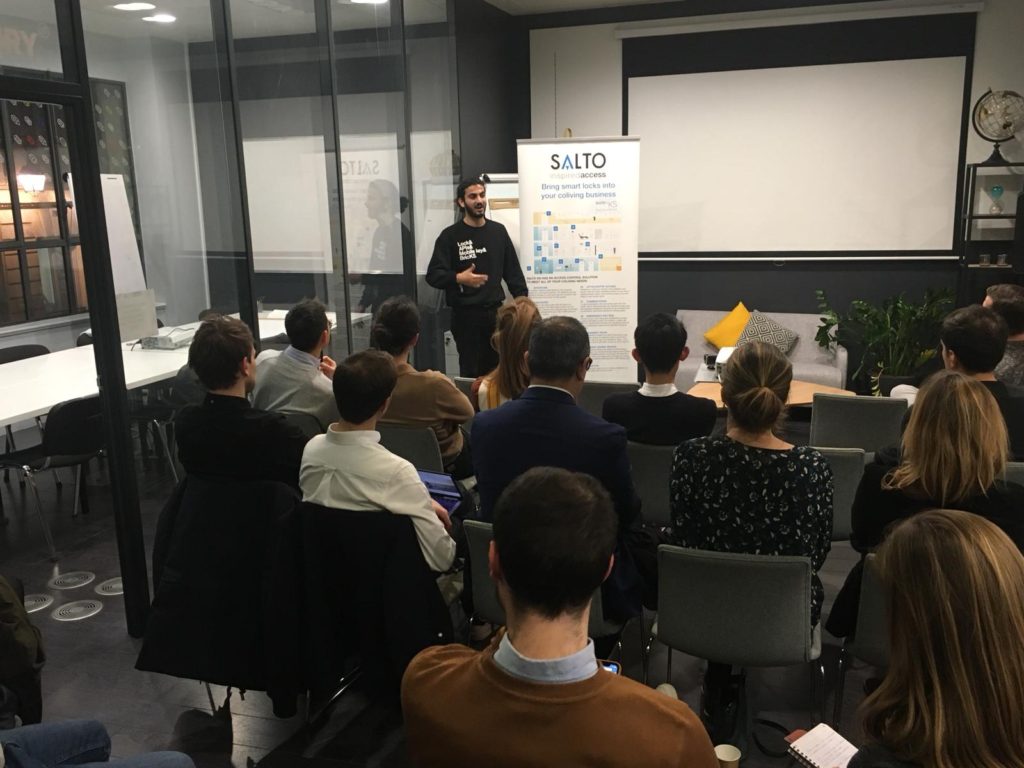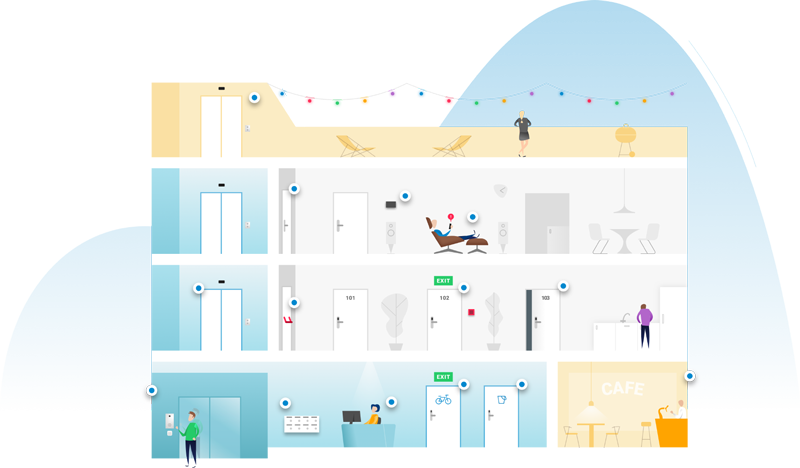Earlier this month we co-hosted a meet up with Co-Liv, Cutwork and Salto KS at the Maif Start Up Club in Paris. The topic was about demystifying the design process in coliving and understanding how best to work with architects and experience designers.
Our cofounder Matt Lesniak did a presentation on community experience design strategies taking into consideration the core aspects of The Conscious Coliving Manifesto.
Then, Omar Tarek from Salto KS did a presentation on enhancing UX flows through technology and Kelsea Crawford presented about standard design processes and pricing for coliving. We had some great guests from Stroika, CoCo (another one!) Bikube, Colonies, and Colivme.
Below are 3 main takeaways from the evening:
1 - The paradox of F,F&E
Kelsea Crawford and Antonin Yuji Maeno brought us through the different levels of intervention when building a coliving space.
They referred to their own case study with Flatmates, the Station F coliving project that they worked on in collaboration with Wilmotte & Associés. They shared their defnition of F,F&E with us, saying “If we turned a room upside down, everything that falls, including lights, is the F,F&E”. They then went on to talk about the paradox of F,F&E in coliving, which is that coliving spaces feels like a traditional apartment, but they are used like a hotel or student residency.
This means that operators need to consider the lifespan, durability, sustainability and even flexibility/modularity of their F,F&E products. Great insights!
“If we turned a room upside down,
everything that falls, including lights,
is the F,F&E”Kelsea Crawford, Cutwork
2 - The "community versus convenience" paradox
Another paradox?? Guess that great minds think alike…
Matt Lesniak brought us through the concept of the “community versus convenience” paradox.
He explains that when coliving operators offer too many services and too much convenience, the engagement of residents tends to decrease. Something we have noticed is that some coliving operators have too high of a service layer to their product (i.e. daily cleaning, top down events programming and 24/7 reception) which disincentivizes residents to take responsibility for the space.
Matt also explained that this creates a double edged sword scenario: the more service layers provided, the more residents put the responsibility of taking care of their home on the operator.
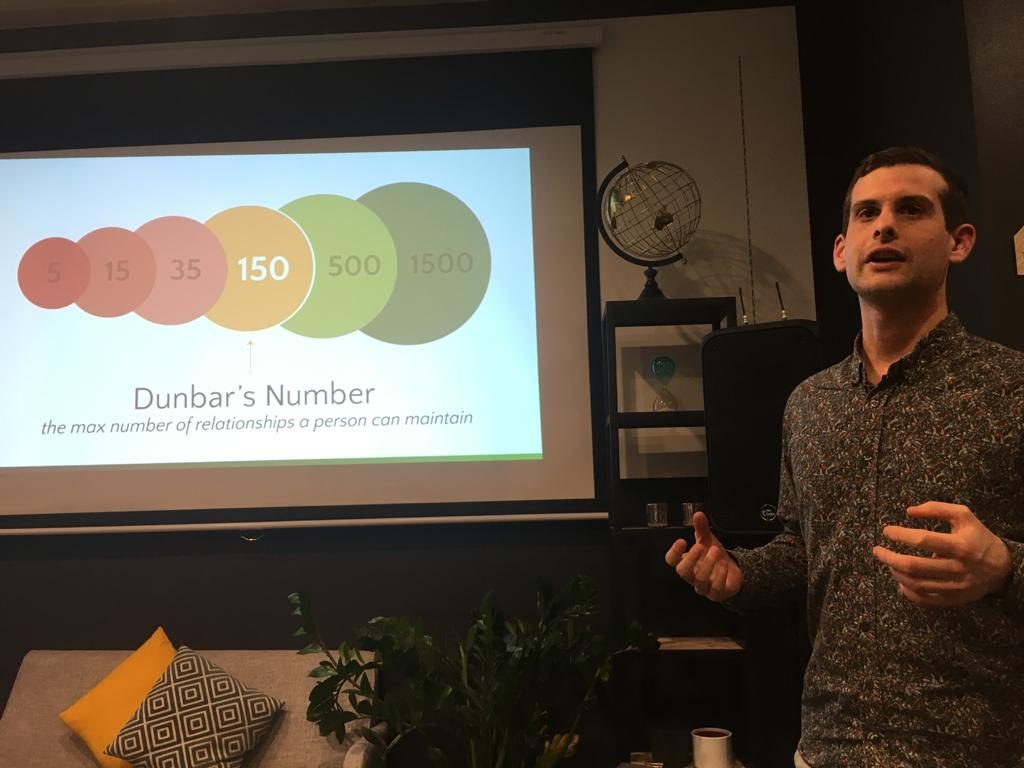
3 - User experience flows and technology
Salto KS’ speciality is in cloud-based access control solutions, but they are focusing on coliving as one of their corporate verticals alongside PBSA, coworking and other hospitality sectors. They are considering how a technology feature like smart locks can enhance the user journey flow in coliving spaces, as depicted in their image below:

Salto KS UX Flow
Omar Tarek explained how they are using a holistic approach to enable both their smart lock hardware and software to streamline operations. This is an important step to free off time from community managers or front of house staff so that they can focus more on the facilitation of events and the community experience.
Wrapping up
We had a fun time co-organising this meet up with our partners and friends in the Paris coliving world. We hope to see you at our next Amsterdam Coliving Meetup in a few weeks at Zoku!
This article has been authored for you by:
Matt is responsible for designing community experience and impact strategies and measuring the social value of coliving communities. Matt is also a founding member and current Head of Community of Co-Liv and has worked for The Collective on their Impact Team.
